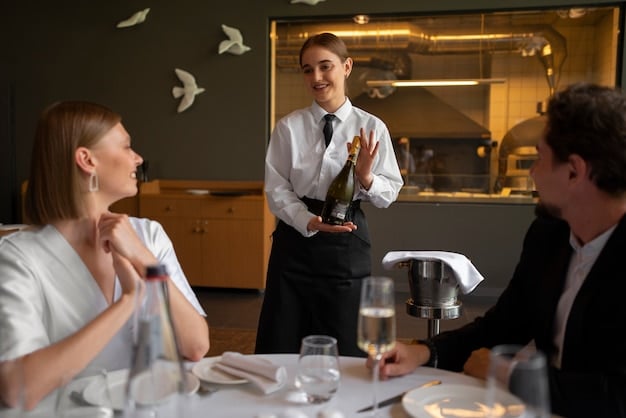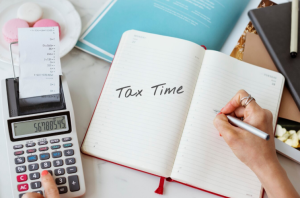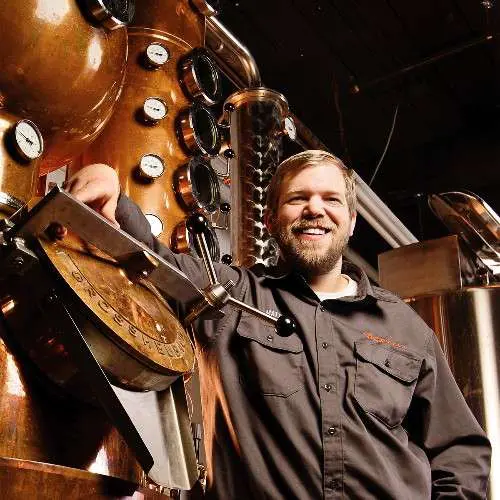Restaurants fail when they focus on food quality alone. Even with the best menu, poor service can drive customers away permanently. The truth? Service makes up 75% of the total dining experience, according to the National Restaurant Association’s 2025 industry report.
Let’s be direct: Your staff needs more than basic training. They need a system that transforms them into service professionals who create memorable experiences. This isn’t about teaching them to smile or say “please” and “thank you.” It’s about building a team that understands the psychology of hospitality.
Think about your last memorable restaurant experience. What made it special? Chances are, it wasn’t just the food – it was how the staff made you feel. In this complete breakdown, we’ll cover everything from creating clear restaurant customer service guidelines to handling customer complaints. More importantly, you’ll learn how to increase customer satisfaction and make these practices stick, creating lasting changes in your team’s performance. By implementing a system that improves consistent service and helps gather feedback from existing customers, you create a cycle of happy customers who become returning customers.
This is your complete guide to transforming your restaurant’s service culture, backed by data and real-world experience. By focusing on customer experience begins with the way your team engages with guests, you create a positive experience that encourages customers to come back. Plus, gathering valuable insight from online reviews will give you a clearer understanding of what works, and what needs improvement. Remember, proper training is essential for making sure difficult customers are handled professionally, leading to an enjoyable experience for all. To further refine your approach, you should explore the best practices in restaurant operations. Understanding and implementing these strategies can enhance efficiency and elevate customer satisfaction across your establishment. By assessing what leading restaurants do well, you can adapt and apply similar methods to improve your service delivery and operational success. For insights into effective practices, you can check out this guide on the best practices in restaurant operations.
Efficiency in restaurant operations is crucial, as it directly impacts both customer satisfaction and profitability. Streamlining processes allows your staff to concentrate more on serving customers rather than being bogged down by logistical issues. For further insights into managing restaurant operations effectively, you can explore this comprehensive guide on daily restaurant operations management. Implementing these techniques can lead to improved service standards and enhanced profitability.
When executed well, these methods will lead to a seamless experience and improved customer lifetime value, allowing you to grow your restaurant’s success over time. To further enhance your restaurant’s profitability, consider strategies to optimize your table turnover rate. Increasing the efficiency with which tables are seated and served can significantly impact your bottom line and overall success.
Integrating effective practices in restaurant inventory management can also play a crucial role in maximizing your restaurant’s profitability. By ensuring that stock levels are accurately monitored and managed, you can reduce waste, improve service efficiency, and better meet customer demand.

27% higher customer satisfaction
Professional delivery features:
- Real-time GPS tracking
- Automated ETA updates
- Delivery confirmation photos
- 27% higher delivery satisfaction
1. Step-by-Step Guide to Improve Customer Service in Restaurants
Clear standards and training lead to exceptional service.
Monitor progress and encourage feedback for continuous improvement.
Use real scenarios for practical staff training.
Step 1: Define Customer Service Standards
Creating strong service standards is important. Begin by listing the core values that define exceptional service in your restaurant. This step is essential for consistency and excellence.
List Core Values: Note down the essential qualities you expect from your staff. Include values like politeness, speed, and attentiveness.
Create Guidelines: Outline clear instructions on how staff should interact with customers. This includes greeting, taking orders, and handling complaints. Ensure these guidelines cover every touchpoint from greeting to farewell.
Detail Special Scenarios: Define procedures for unusual situations. These might include handling complaints, refund requests, or accommodating special dietary needs.
Set Goals and Track Success: Clear goals help assess the service quality. Use tools like surveys and feedback forms to track performance, making it easy to see where improvements are needed.
Step 2: Implement Comprehensive Staff Training Techniques
A structured training plan combines different teaching methods. This ensures your staff learns effectively.
Mix Training Methods: Use both in-person workshops and online modules. In-person workshops build rapport and offer immediate feedback, while online modules allow flexible learning.
Real-Life Scenarios: Introduce practical situations in training sessions. Have staff role-play different interactions to gain confidence and practice their skills in a controlled environment.
Feedback from Peers: Encourage staff to give each other feedback. Peer reviews provide insights and help identify strengths and weaknesses.
Teach Communication and Problem-Solving: Teach them how to communicate clearly and handle issues calmly. This builds a stronger relationship with customers and ensures smooth service.
Promote Empathy and Patience: Stress the importance of putting themselves in the customer’s shoes. Empathy improves interactions and leads to better service.

Techniques for Effective Training Sessions
Training effectiveness depends on the methods used. Choose techniques that suit your restaurant’s environment.
Interactive Workshops: Facilitate hands-on activities where staff can learn by doing. This engagement makes learning memorable.
Scenario-Based Learning: Create scenarios that reflect real-life challenges. Use these to help staff learn the best ways to respond to tough situations.
Guest Speakers or Experts: Invite industry experts to share their experiences. Hearing from experienced professionals can inspire and motivate staff.
Step 3: Monitor and Evaluate Progress
Regular oversight is essential to maintain high service standards.
Regular Feedback Collection: Use surveys and direct customer feedback to gauge how well staff meet service expectations.
Adjust Training as Needed: Feedback highlights what’s working and what’s not. Use this information to tweak training programs and address any gaps.
Measure Success with Customer Feedback: Customer observations are key indicators of staff performance. Monitor and evaluate this feedback to identify areas of excellence and challenges.
Celebrate Excellence and Improvement: Recognize achievements and progress. Encouragement boosts morale and motivates staff to maintain high standards.
Regular Updates on Trends: Keep your staff informed about new service techniques and trends in the industry. Staying updated ensures your restaurant stays competitive.
Encourage Sharing of Ideas: Create a culture where staff feels comfortable sharing ideas for improvement. This collaboration fosters innovation and a stronger team dynamic.
This is the framework for training staff to deliver exceptional customer service at your restaurant. Effective training motivates and empowers employees, so they provide better service. Remember, as expert Dana Spiotta noted, “Although a great restaurant experience must include great food, a bad restaurant experience can be achieved through bad service alone.” Training is the bridge to prevent such experiences.
Advanced Tips for Excellent Customer Service in Restaurants
Personalized service and loyalty programs create a welcoming atmosphere.
Recognize and avoid training pitfalls to improve efficiency.
Well-prepared trainers ensure consistent staff development.
Additional Advice for Improving Customer Engagement
Personalized service is key. It creates a feeling that the restaurant truly values its guests. This his approach means remembering names, preferred dishes, and drink choices. When staff genuinely engage with diners, it enhances the overall experience. Technology can help here. Digital systems for tracking customer preferences and past orders can guide servers. However, a human touch should always be the core.
Loyalty programs are another powerful tool. These sharpen customer retention. In fact, nearly 70% of operators with loyalty programs note increased customer traffic. While simple discounts are great, more personalized rewards are even better. Offer experiences like exclusive tasting events or priority reservations. This encourages repeat visits and creates a connection between the customer and the restaurant. Books like “The Loyalty Leap: Turning Customer Information into Customer Intimacy” by Bryan Pearson provide deeper insights. They illuminate how the right loyalty strategies can transform hospitality experiences.
Common Pitfalls in Staff Training and How to Avoid Them
Training must be manageable. Overloading staff with information is counterproductive. The more you cram into training sessions, the less your staff will retain. Instead, structure training into focused segments. Limit each session to key takeaways. Use role-playing and real scenarios to solidify learning. This keeps things practical, not theoretical.
Another issue is unprepared trainers. It’s not enough to know the content; trainers should inspire and lead. A knowledgeable trainer adjusts methods to suit different learning styles. They respond to questions with authority and clarity. Books like “The First-Time Trainer” by Tom W. Goad can be a valuable resource for new trainers. These provide strategies for effective instruction and engagement.
Efficient Use of Resources to Maximize Impact
Resource allocation can greatly affect the training outcome. If resources are limited, prioritize areas with the greatest impact on customer service. This could involve investing in technology to automate basic tasks, freeing up staff to focus on personal customer interactions. The balance between digital tools and human interaction is vital.
There’s a debate on where the balance should lie. Some argue that too much tech makes the dining experience impersonal. Others believe embracing technology is the future. Technology should support, not replace, the personal touch diners expect. For those interested in exploring this further, “Restaurant Technology: Innovating to Stay Ahead” offers a deep dive into how technology shapes dining experiences. It’s important to stay updated with the industry’s technological trends.
The relationship between customer experience and service training is complex; it’s constantly evolving with industry trends. Keeping staff motivated and well-trained is crucial. As Steve Jobs highlighted, starting with the customer experience and working backward toward technology is key. Keeping staff engaged ensures that they don’t just meet, but exceed expectations. Managing effective restaurant operations is essential for delivering great customer service. Streamlined processes help staff focus on guest interactions rather than getting bogged down by logistics. Understanding how to efficiently handle daily operations can lead to enhanced service standards and boost overall efficiency. For further insights, you can learn more about optimizing restaurant operations.
To support optimal restaurant operations, understanding the essentials of the back of house is crucial. This area encompasses all the behind-the-scenes activities, including food preparation and inventory management, which are pivotal for ensuring a comprehensive guest experience. Educating your staff about both front and back of house operations enhances teamwork, efficiency, and ultimately, customer satisfaction.
Troubleshooting Issues in Good Customer Service Training
View negative feedback as an opportunity to get better.
Discover what drives low staff motivation and address it.
Recognize efforts to boost morale and performance.
Solutions for Handling Negative Feedback
Negative feedback in the restaurant industry is common. It’s how you handle this feedback that counts. Here are the steps to address it effectively:
Listen Actively: When a customer voices a complaint, make sure to listen without interrupting. This shows respect and helps you understand the problem thoroughly.
Acknowledge the Issue: Once you listen, acknowledge the complaint. Something like, “I understand you’re upset about the delay,” reassures the customer that you recognize their issue.
Apologize Sincerely: Offer a genuine apology. It doesn’t cost anything to say sorry, but it can go a long way in diffusing tension.
Assess the Feedback: Not all feedback is the same. Evaluate if the complaint is a recurring issue or a one-time incident. Look into previous feedback to spot patterns.
Create a Solution: After understanding the problem, propose a solution on the spot. If a meal was delayed, it might involve offering a discount for the wait.
Follow-up: Once the issue is resolved, ensure the customer is satisfied. A simple, “Is there anything else I can do for you?” can reassure them.
Implement Changes: Use the feedback to make improvements in your service where necessary. If a pattern arises, it’s time to take action with the staff.
Robert Kiyosaki said, “Inside of every problem lies an opportunity.” So, treat feedback as a way to improve and offer better service.
Addressing Unmotivated Staff
Unmotivated staff can lead to poor customer service. Here’s how to tackle it:
Identify the Causes: Start by talking with your team. Ask open-ended questions to understand if they feel overworked or if there are unresolved issues.
Incentive Programs: Implement a rewards program. Simple incentives can include gift cards or dining vouchers for outstanding service. This can spark motivation and competition among employees.
Recognize Efforts: Acknowledge hard work regularly. Public recognition, whether during team meetings or on a staff board, boosts morale. Aligning with Tony Hsieh’s quote: “Customer service shouldn’t be a department, it should be the entire company,” encourages a culture of appreciation.
Provide Training Opportunities: Ongoing training can keep staff engaged and feeling valued. Make training sessions diverse, combining hands-on workshops with online learning modules.
Establish Open Communication: Regular check-ins and open-door policies allow employees to express concerns or suggestions. This fosters a sense of belonging and involvement.
Career Development: Offer pathways for growth, like leadership training. Employees are often motivated by opportunities to advance within the organization.
By implementing these steps, you empower your staff to feel more connected and invested in their roles. As Martin Oliver noted, “You cannot give good customer service if your employees don’t feel good about coming to work.” Address the root causes to uplift your team, which is reflected in their service.
Continue fostering a workplace culture where everyone is motivated and focused on providing exceptional service.
Further Resources for Restaurant Customer Service Training
Books and online materials improve service skills.
Engaged employees provide better customer experiences.
Consistent training fosters customer loyalty.
Suggested Training Materials and Resources
Books like “Setting the Table” by Danny Meyer offer valuable lessons on hospitality and service excellence. Meyer’s philosophies can help managers think about how to create a service-oriented culture. Another noteworthy read is “Be Our Guest” by the Disney Institute, which delves into how Disney maintains high service standards. These books provide more than just tips; they offer a deep dive into service principles that carry weight.
Online platforms like Coursera and Udemy have courses specifically tailored to hospitality. These platforms allow restaurant staff to learn at their own pace. Furthermore, attending seminars and workshops ensures that your staff gets the latest insights from industry experts. Events from organizations like the National Restaurant Association often have well-respected speakers who bring rich industry experiences.
A balance of reading and attending events helps in adopting best practices. Managers should guide staff towards these resources for steady growth in skills and knowledge.
Importance of Employee Engagement Strategies
Engaged employees often create better customer experiences. Studies show that businesses with engaged staff see a 10% increase in customer satisfaction. What creates this engagement? It’s a mix of recognition, growth opportunities, and being heard. Companies with strong engagement strategies have lower turnover rates. In fact, almost 40% lower.
The industry is waking up to the idea that staff who feel engaged are less likely to move to competitors. Regular check-ins, personalized feedback, and perks can form a part of an engagement strategy. When staff feel they are part of a team, they invest more in their roles.
Engagement ties directly to service. Loyal staff means consistent customer interactions and even customers returning. Implementing engagement strategies can require effort, but the impact on service quality and loyalty makes it worth it.
Developing Engagement Strategies
To develop engagement strategies, understand what your team values. Surveys or one-on-one meetings can be helpful. Tailored programs that address team needs can work. This might involve new communication channels or recognition programs. The goal is to boost morale and make staff feel valued.
Once strategies are in place, feedback loops ensure they’re effective. Regularly asking staff what’s working can keep strategies relevant. A dynamic approach allows for adjustments and greater success in retention and service delivery.
Why Consistent Training Matters in Restaurants
Consistency in training ensures patrons receive uniform excellence. When every team member is on the same page, they can provide a predictable and satisfying customer experience. Every visit should reflect the restaurant’s standards. Studies show that consistent training can uplift customer satisfaction by 20%. It’s not just about having good staff but about having every team member perform at their best.
Regular and comprehensive training sessions can be a solution. These sessions should not only focus on new staff but also on honing the skills of existing employees. Refreshing knowledge helps in sustaining high service levels.
The long-term benefits of consistent training also include word-of-mouth marketing. Satisfied customers are more likely to recommend the restaurant to others. This can result in increased business without extra marketing expenses.
Building a Training Framework
Constructing a training framework involves setting clear objectives. Align these with the restaurant’s goals. Use benchmarks to measure the progress of staff. A solid framework includes diverse methods like workshops and webinars. Regular assessments can maintain standards over time.
Fostering an environment that supports learning can help too. Offer avenues for feedback or questions during training sessions. This creates an atmosphere where team members feel comfortable contributing and learning from each other.
Conclusion
Customer service training in restaurants is not a one-time task, but an ongoing commitment to excellent customer service. When you create clear standards, implement effective restaurant customer service training, and monitor progress, you build a team that delivers exceptional customer service consistently.
Your staff members are the direct link between your restaurant’s vision and your restaurant customers’ experience. Each interaction they have shaped your restaurant’s reputation. By investing in their growth through structured training programs, you create a positive cycle: well-trained staff provide better service, leading to customer satisfaction and repeat customers who return often and recommend your restaurant to others.
Success in the restaurant industry comes from attention to detail and continuous improvement. Start with the basics: clear communication, problem-solving skills, and empathy. Then build upon this foundation with advanced techniques and regular feedback sessions. Remember that your training program should evolve based on customer feedback and changing restaurant business needs.
The most successful restaurants understand that exceptional service isn’t about following a script – it’s about creating genuine connections with guests while maintaining professional standards. When you commit to ongoing staff development, you’re investing in your restaurant’s long-term success. Customers feel valued, leading to positive reviews, positive dining experiences, and loyal customers. Offering great service, exceptional dining experience, and quick service also helps in customer acquisition costs and boosts restaurant sales.
By focusing on anticipating customer needs and providing excellent customer service, you foster an environment where your restaurant managers and the entire team work toward the shared goal of customer satisfaction. Informing customers of special promotions, such as a free dessert or other rewards, can enhance customer experience and lead to new customers becoming regular customers. As your team hone their customer service skills, you’ll see the benefits in both positive feedback and repeat customers.






























